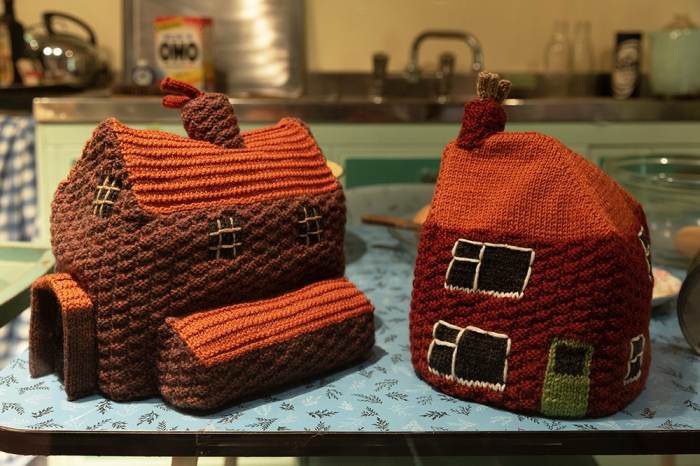Warrington Museum & Art Gallery, Bold Street, Warrington WA1 1JG
5 July – 31 August 2025

Knitted Homes of Crime – Eleanor, 2002, hand knitted and embroidered wool, quilted lining fabric.

Knitted Homes of Crime – Charlotte (on left), Knitted Homes of Crime – Ethel (on right), 2002, hand knitted and embroidered wool, quilted lining fabric.
Any, Body, Home questions and reimagines the domestic, spotlighting narratives around power, identity, beauty, labour, memory and belonging. It looks beyond the windows through which we often view the world, opening up intimate and critical reflections on how “home” is experienced, shaped, and claimed.
The works in Any, Body, Home are bound by a shared concern with the domestic and the bodily — how spaces shape us, and how we shape them. From architectural spaces that mirror cultural displacement to garments that speak of inherited roles, from homes of control and violence to sites of care and ritual, the exhibition reveals the domestic as both sanctuary and site of struggle. The body, often central — whether adorned, trapped, performing, or dissolving into its surroundings — becomes a vessel for storytelling and resistance. Together, these works disrupt conventional ideas of femininity and homemaking, offering alternative, sometimes subversive narratives that challenge what it means to dwell, to nurture, and to belong.
Exhibiting artists: Natalie Baxter, Susie Green, Marie Jones, Ivy Kalungi, Rachel Maclean, Flo Perry, Amalia Pica, Freddie Robins, Emily Speed, and Katie Tomlinson, the exhibition spans painting, sculpture, film, installation, and performance.
Curated by Culture Warrington Associate Artist Marie Jones.
Photography: Amy Sanderson








